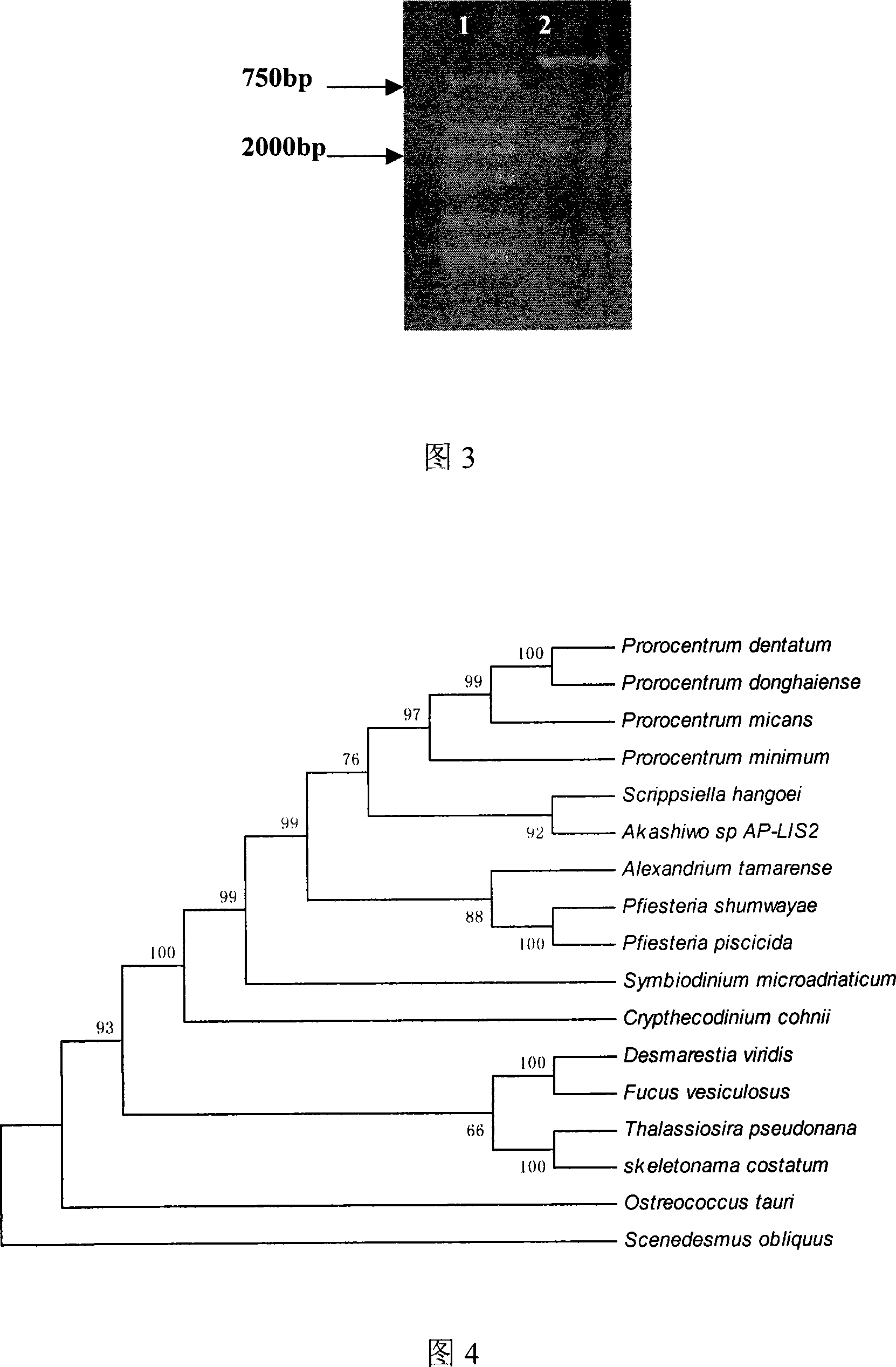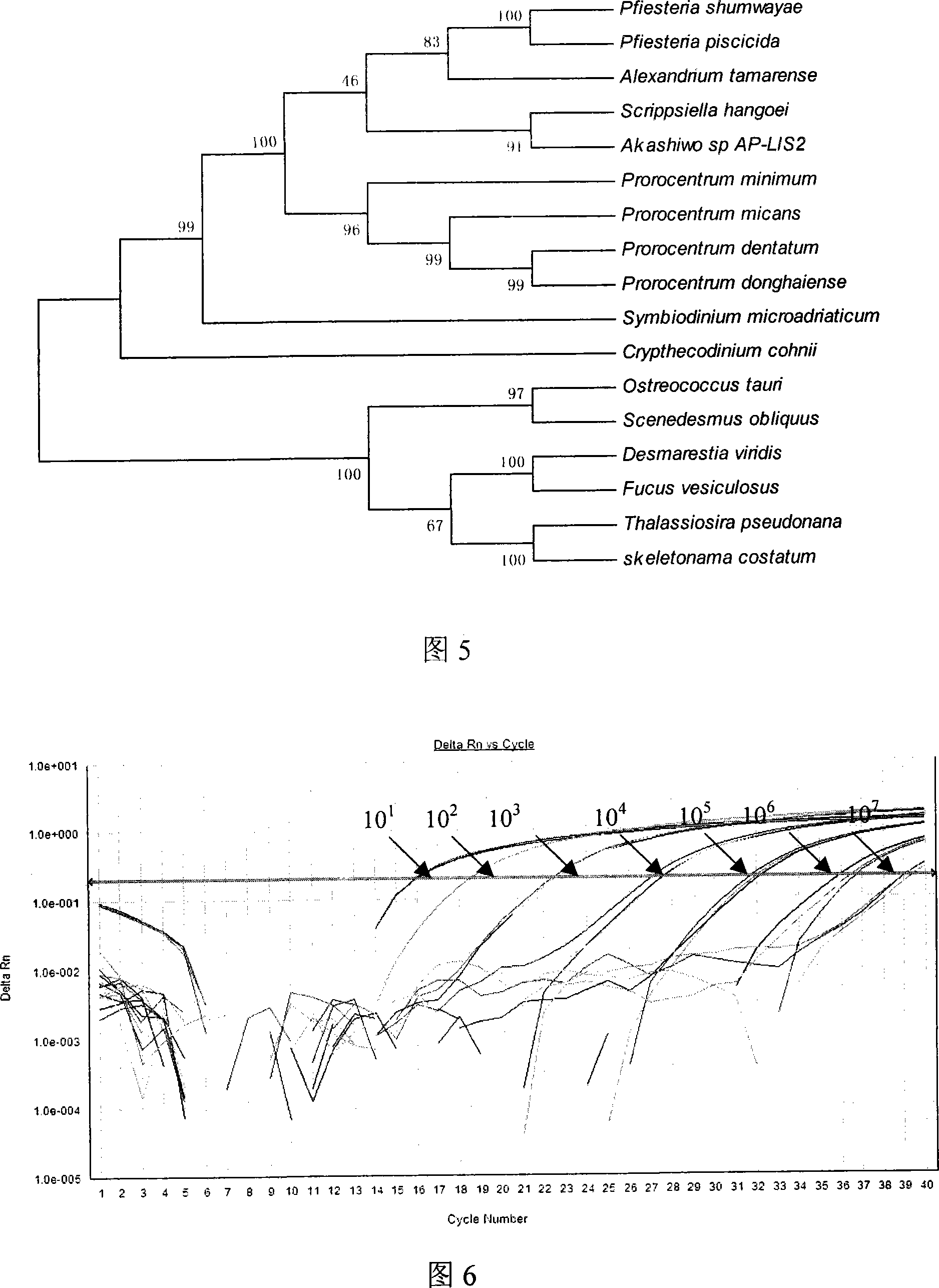RFQ-PCR detecting method for skeletonema costatum cytochrome b gene
An RFQ-PCR and cytochrome technology, which is applied in the detection field of planktonic diatoms, can solve the problem that the basic physiological and ecological parameters such as the growth rate of planktonic algae cannot be measured, and achieves high reliability of the standard curve, high regression coefficient, and high detection efficiency. Accurate results
- Summary
- Abstract
- Description
- Claims
- Application Information
AI Technical Summary
Problems solved by technology
Method used
Image
Examples
Embodiment Construction
[0039] In the embodiment of the present invention, the culture process of Skeletonemacostatum is: Skeletonemacostatum (Skeletonemacostatum) is cultivated to logarithmic growth phase with F / 2 medium in the laboratory, culture conditions: light / dark cycle is 12h / 12h , the light intensity is 4000Lux, and the culture temperature is 22-25°C.
[0040] According to the Cytochrome B gene sequence of Thalassiosira pseudonana obtained from the GenBank database, the primers for Scutella costa were designed as follows: TpCbfp5-ATA CGC TTG GAG TTT TGG GTC TTC T -3, TpCbrp5-ATGAGC CGG AGT TGA CAT AGG ATC T-3.
[0041] Collect 5 copies of Skeletalum costanum (cell density 4.1×107 cells / mL) cultured for one week, about 3.8×10 7 cells (the weight of the algae concentrate is about 150mg). Use the following RNA extraction methods to extract:
[0042] (1) Collect algae cells and grind them into fine powder with a mortar under the condition of continuously adding liquid nitrogen;
[0043] (2) ...
PUM
| Property | Measurement | Unit |
|---|---|---|
| diameter | aaaaa | aaaaa |
Abstract
Description
Claims
Application Information
 Login to View More
Login to View More - R&D
- Intellectual Property
- Life Sciences
- Materials
- Tech Scout
- Unparalleled Data Quality
- Higher Quality Content
- 60% Fewer Hallucinations
Browse by: Latest US Patents, China's latest patents, Technical Efficacy Thesaurus, Application Domain, Technology Topic, Popular Technical Reports.
© 2025 PatSnap. All rights reserved.Legal|Privacy policy|Modern Slavery Act Transparency Statement|Sitemap|About US| Contact US: help@patsnap.com



